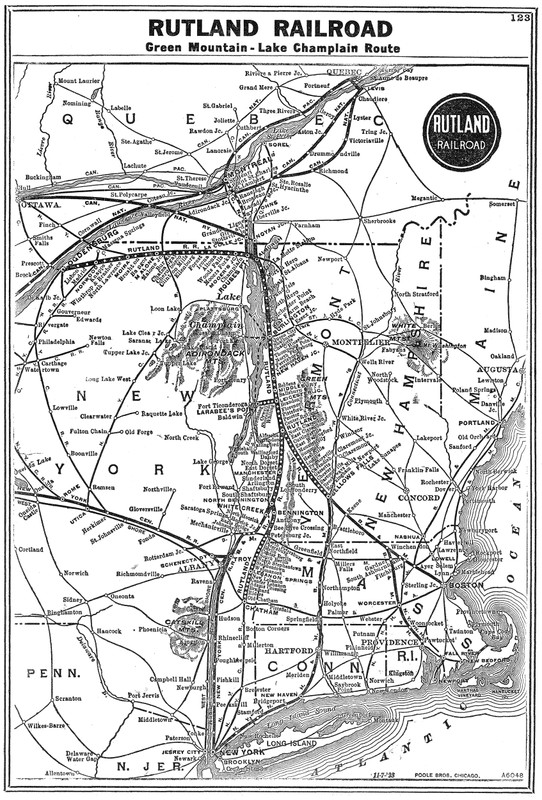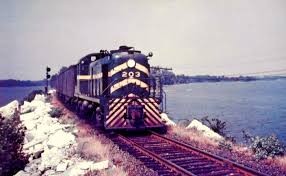The Rutland Railroad
Introduction
Text-to-speech Audio
Images
Rutland railroad map from the early 1900s

Rutland Railroad diesel locomotive

An early Rutland Railroad steam locomotive

Backstory and Context
Text-to-speech Audio
The beginning of the history of the railroad was a rivalry between two systems whom were both trying to save its independence. They rivaled to control the traffic between the Great Lakes and the Atlantic Ports. The Rutland Railroad was chartered on November 1, 1843. Options opened up for stock in 1845 and construction was on the line from Burlington to Windsor. This railroad was leased to Central Vermont Railroad in 1845 which was originally known as the Champlain and Connecticut River Railroad Company. This was changed in 1847 to The Rutland and Burlington Railroad Company. When is was finished in December of 1849, the road was constructed from Burlington to Bellows Falls.
The Rutland Railroad was founded in 1850 this system took place in the New England area, based out of Rutland. When the Vermont Legislature had finally created the state commissions in 1855 to oversee the railroad construction, maintenance and operations, the first person that they gave the job to was Charles Linsley who happened to be a member of the council of rutland.
At this time there was another railroad charter established in Vermont for the Central Vermont Railroad, which came to be rivaled against the Champlain and Connecticut River Rail. Organized by Charles Paine, the Central Vermont Railroad ran through the White and Onion River Valleys, being centralized near the hometown of Paine himself, in Northfield, Vermont. As both of these railroad systems were being built near the end of the 1840s, the rivalry between Charles Paine and Timothy Follett developed, and this rivalry went on for decades after the completion of both the railroads. Then in 1847 to better suit his intentions, Follett changed the name of the Champlain and Connecticut River Rail to the Rutland & Burlington Railroad. For the next two years, Follett put in lots of effort to see the construction of the railroad completed in 1849. As for the Central Vermont Railroad, the construction of the railway stretching from Hartford to Painesville, which is now Essex Junction, began in 1845.
From 1743 to 1961 when the major decline of the Rutland Railroad Company would occur, the Rutland Railroad would allow Rutland, and Vermont as a whole to have a strong economy.
Cite This Entry
Lawyer, Nicole and Clio Admin. "The Rutland Railroad." Clio: Your Guide to History. October 19, 2020. Accessed February 21, 2025. https://theclio.com/entry/91696
Sources
“Archive Record.” Railroad Records - Bennington & Rutland Railroad Company, https://bennington.pastperfectonline.com/archive/FB89CFCB-EDE4-4CE2-B334-957415799030.
Railroads Come to Vermont, Vermont Historical Society, http://www.freedomandunity.org/1800s/railroads.html.
“Rutland Railroad.” American, https://www.american-rails.com/rutland.html.
“Timeline.” Rutland Railroad Historical Society, http://www.rutlandrr.org/history/timeline/.
https://www.american-rails.com/rutland.html
https://www.american-rails.com/rutland.html
http://sites.middlebury.edu/rutlandrr/contents/

